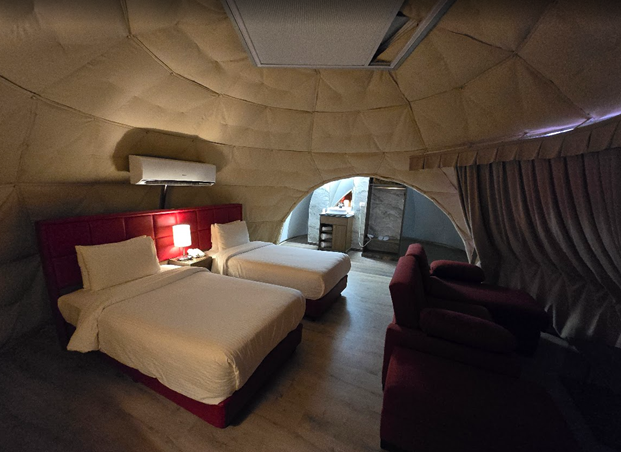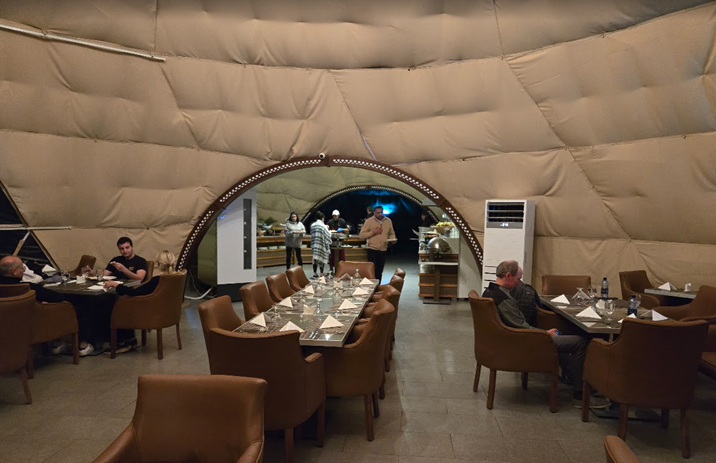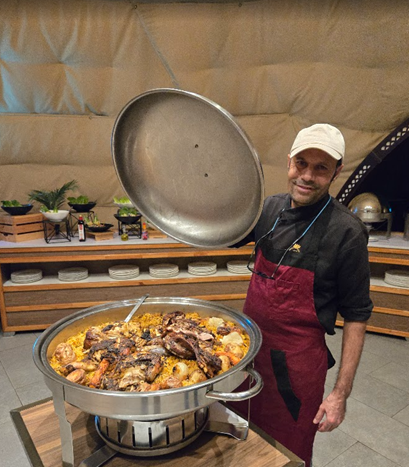Wadi Rum: Mars on Earth
The Vast Red Desert
Wadi Rum stretches before you like a Martian dreamscape – an immense terrain of rust-colored sands and towering sandstone monoliths that pierce the cloudless blue sky. A typical six-hour jeep tour begins at the Visitor Center, where your Bedouin guide welcomes you aboard a weathered 4×4 pickup fitted with bench seats. As you rumble into this labyrinth of canyons and dunes, the modern world evaporates. The tour unfolds at a deliberate pace, allowing time to climb sand dunes, examine ancient rock inscriptions, and pause for sweet Bedouin tea brewed over an open fire. By day’s end, your clothes will be tinged with the distinctive red dust that seems to permeate everything in this magnificent wilderness.
Video of drive:
https://photos.app.goo.gl/42Ya1CXMBWLsrkSz8
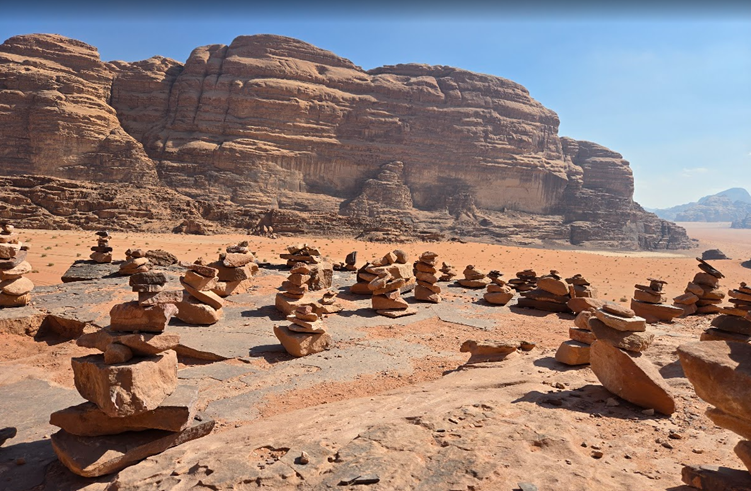
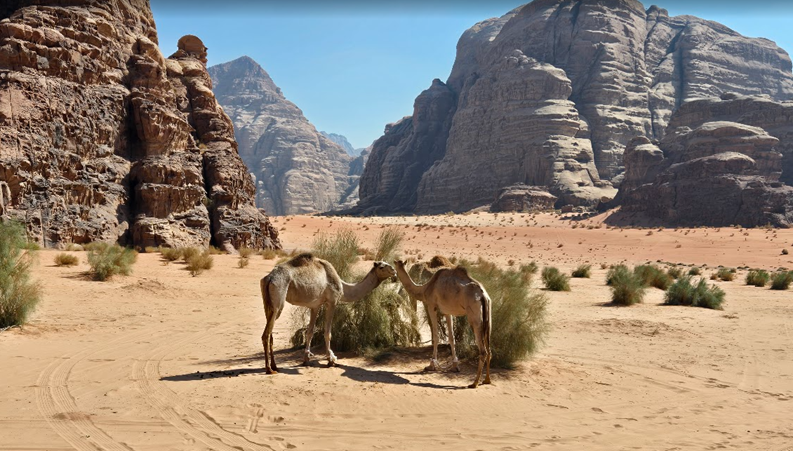
Video of camels: https://photos.app.goo.gl/RuKWbsx6pF2DaghB6
Hollywood’s Red Planet
Standing in Wadi Rum, it’s immediately clear why Ridley Scott chose this location for “The Martian.” The director hardly needed computer-generated imagery to convince viewers they were witnessing Matt Damon’s struggle for survival on the distant red planet. Your guide will proudly point out specific filming locations, including the spot where Damon’s character established his potato farm. “The Martian” isn’t alone – “Prometheus,” “Rogue One,” and “Dune” have all used this geological wonder as their alien canvas. As you stand where Hollywood legends once stood, the line between Earth and Mars blurs into a beautiful, disorienting haze.\
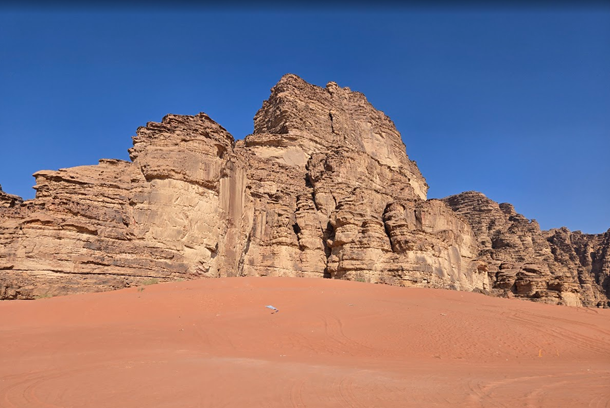
Al-Khazali Canyon
Tucked between imposing sandstone cliffs, Al-Khazali Canyon offers a narrow fissure that slices dramatically through the mountain. The entrance, barely wider than your shoulders in places, requires sideways shuffling to penetrate its depths. What makes Al-Khazali truly remarkable are the ancient Thamudic, Nabatean, and Islamic inscriptions etched into its smooth sandstone surfaces – some dating back over 2,000 years. Your Bedouin guide might trace his fingers along a particular carving, explaining how his ancestors used this natural shelter for centuries. The acoustics create an eerie amphitheater effect, making it easy to imagine ancient voices still reverberating through this sacred space.
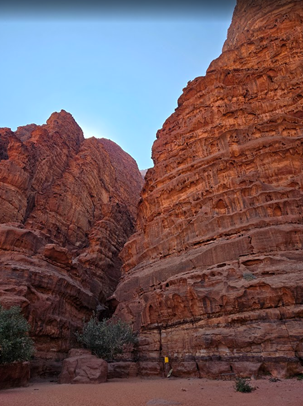
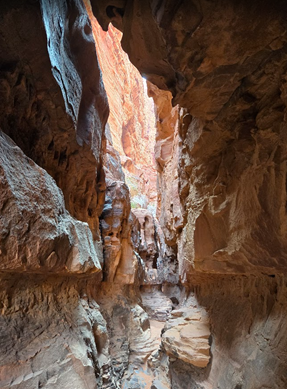
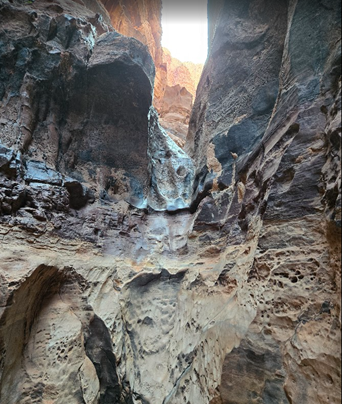
Burdah Rock Bridge
Burdah Rock Bridge stands as Wadi Rum’s most majestic natural arch, a gravity-defying span of sandstone suspended 80 meters above the desert floor. For the adventurous, the scramble to the top represents one of Jordan’s most thrilling experiences. The climb isn’t technically difficult, but requires steady nerves as you navigate steep sections with minimal handholds. Those who conquer the ascent are rewarded with panoramic views that stretch for dozens of miles across the desert wilderness. From this natural platform, you can see the full majesty of Wadi Rum – a patchwork of copper-colored valleys and distant mountains purple in the haze. No photograph captures the visceral thrill of standing on this ancient bridge, feeling the desert wind whip around you.
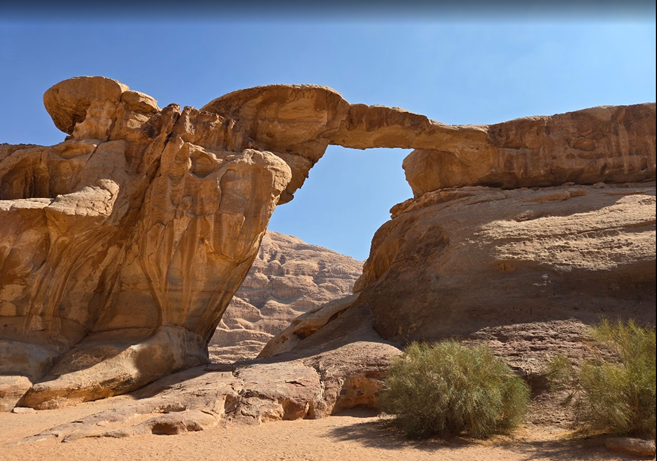
View from the arch
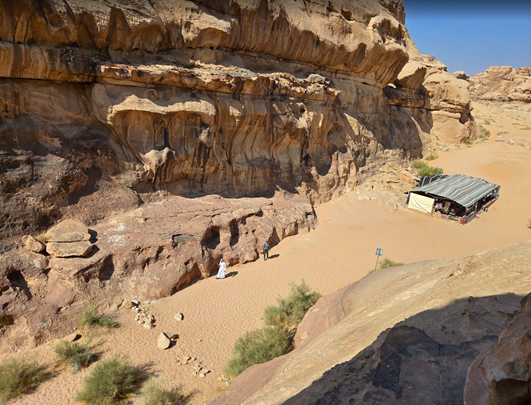
Video:
https://photos.app.goo.gl/yuLCrjL5w5m4cCu46
Mushroom Rock
Rising from the desert floor like something from a Salvador Dalí painting, Mushroom Rock defies logical explanation. This precariously balanced formation features a massive bulbous top perched atop a dramatically eroded stem, creating the unmistakable silhouette of a gigantic fungus. Your guide will likely park in its shadow, offering perfect shelter for a mid-tour break and perhaps another round of sweet Bedouin tea. Geologists can explain the differential erosion that created this marvel, but local Bedouin legends attribute more magical origins – tales of djinn turning massive boulders into mushrooms to provide shade for weary desert travelers.
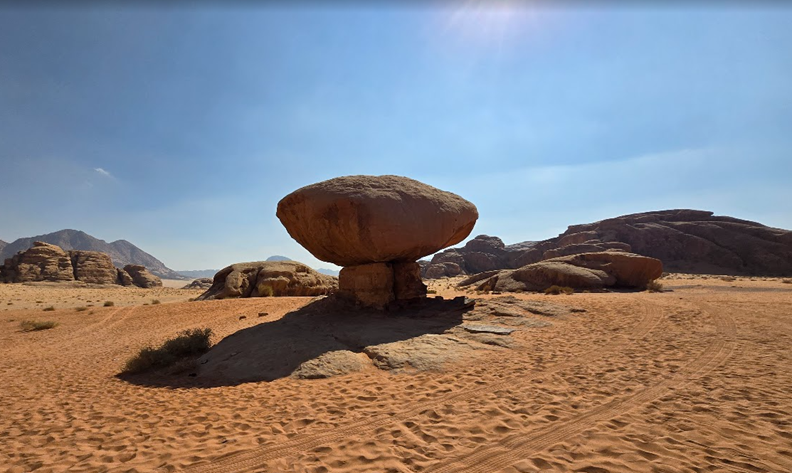
Siq Um Tawaqi (Lawrence’s Spring)
Tucked into a shady crevice where the desert meets the mountains, Lawrence’s Spring offers something precious in this arid landscape – water. Named after T.E. Lawrence, who allegedly frequented it during the Arab Revolt, the spring represents not just historical significance but also Lawrence’s profound longing for such oases during his desert campaigns. The approach requires a moderate climb up a narrow gorge where hardy desert plants create a miniature oasis, a verdant relief that Lawrence himself described with particular yearning in his writings.
Near the top, the spring emerges from the rock, feeding a small pool before continuing down through ancient channels. Lawrence reportedly craved these moments of respite, drawn repeatedly to this place where cool water broke through unforgiving stone. While the historical connection to Lawrence remains debated, his documented thirst for such natural sanctuaries in the desert is well-established. Sitting beside this vital water source, listening to the gentle dripping echo in the canyon, offers a moment to contemplate both the precarious balance of life in this beautiful but unforgiving environment and the deep human longing for sustenance that Lawrence so eloquently expressed during his time in this harsh landscape.
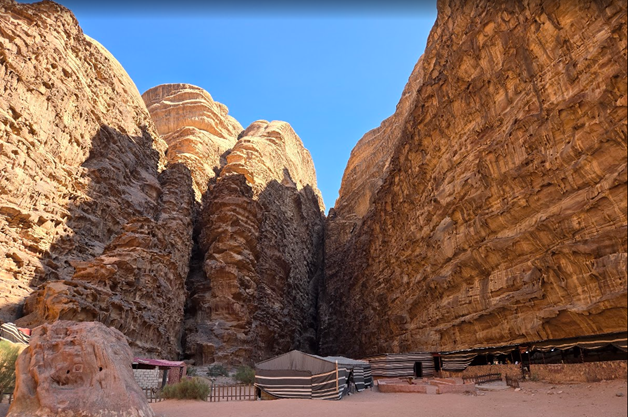
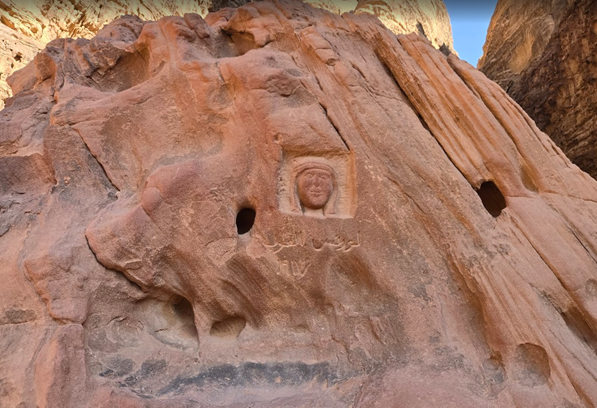
UFO Luxotel Hotel
The UFO Luxotel in Wadi Rum offers unique dome-shaped accommodations across the desert. Each pod features a transparent wall facing the landscape with comfortable interiors perfect for stargazing. With minimal light pollution, the night sky displays a stunning array of stars and a clear view of the Milky Way that you can enjoy from your private terrace. The hotel provides excellent buffet meals for both dinner and breakfast, with a variety of local and international options. In the morning, you’ll wake to sunlight illuminating the sandstone cliffs—a memorable stay in Jordan’s desert wilderness.
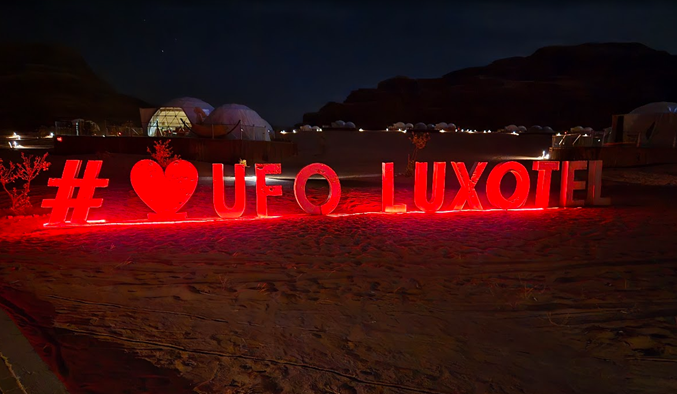
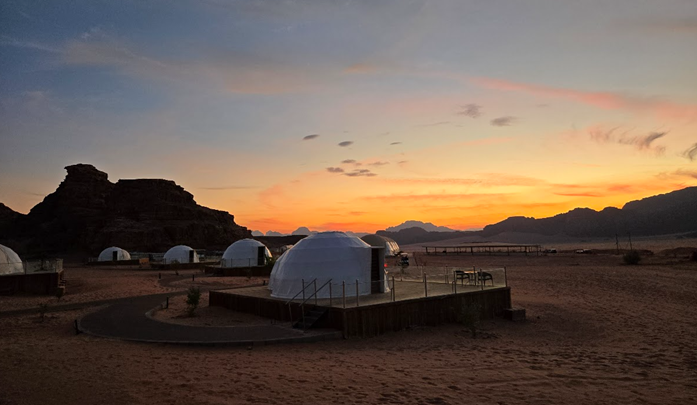
Video of view from the rooms: https://photos.app.goo.gl/fXsGxRmtcEECpmW18
